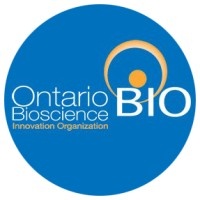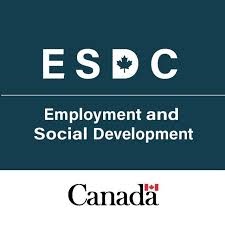
Open
Supported Employment
Last Update: December 3, 2025
ON, Canada
Supports employment for Ontarians with disabilities facing workplace barriers
Grant and Funding
Wage Subsidies And Interns
At a glance
Funding available
Financing goals
Improve employee retention
Eligible Funding
- Maximum amount : 7,000 $
Timeline
- Open Date : November 27, 2023
- Closing date : January 29, 2024
Eligible candidates
Eligible Industries
- Health care and social assistance
Location
- Ontario
Legal structures
- Non-profit
- Public or Parapublic institution
- For-profit business
Annual revenue
- All revenue ranges
Organisation size
- All organization sizes
Audience
- Persons with Disabilities
Non-profit candidates
Sector of operation
- Mental Health and Crisis Intervention
- Social Services
- Employment and Training
- Diversity and Inclusion
Target group
- People with disabilities
- Business owners / entrepreneurs
Revenue structure
- All structures
Scope
- Regional
- Provincial
Overview
The Supported Employment program provides up to $7,000 per participant to help individuals with disabilities overcome barriers to employment. Funding supports a range of activities, including employability skills development, job search assistance, job coaching, workplace accommodations, and job retention services.
Activities funded
- Providing employment support services to individuals with disabilities facing complex barriers to employment.
- Delivering customized job readiness and employability skills development activities.
- Supporting job search, job matching, and job development for people with disabilities.
- Offering job coaching and ongoing support to facilitate employee integration and retention.
- Assisting employers to create inclusive workplaces and address staffing needs with suitable candidates.
Examples of admissible projects:
$ 40,000
Career exploration services for people with disabilities
$ 45,000
Job retention support for employees with disabilities
$ 50,000
Workshop to develop employability skills for people with disabilities
$ 30,000
Inclusive workplace training for employers
$ 30,000
Job matching service for people with disabilities
$ 50,000
On-the-job coaching services for disabled employees
Eligibility
- The employer must be licensed to operate in Ontario.
- The employer must comply with all applicable federal and provincial legislation, including the Occupational Health and Safety Act, the Employment Standards Act, and the Accessibility for Ontarians with Disabilities Act.
- The employer must maintain appropriate Workplace Safety and Insurance Board (WSIB) or private workplace safety insurance coverage.
- The employer must have adequate third-party general liability insurance.
- The job or work experience must be provided in Ontario.
Who is eligible?
- Ontario-licensed employers seeking to hire supported employment participants
- Organizations operating in compliance with federal and provincial legislation (e.g., Occupational Health and Safety Act, Employment Standards Act, Accessibility for Ontarians with Disabilities Act)
Eligible expenses
- Salaries, wages, and benefits for staff and management directly involved in program delivery.
- Hiring and training of staff, including professional development.
- Marketing and outreach costs (e.g., signage, print/web ads).
- Facility costs such as rent and interest on mortgage payments.
- Accounting services and auditor’s fees related to program operations.
- Direct operating expenditures necessary for delivering supported employment services.
- Job-related skills enhancement or onboarding training for participants, including costs associated with temporary reduction in productivity and increased supervision for new hires.
- Workplace anti-stigma training and employer training on best practices for inclusion and supervision of people with disabilities.
- Participant financial supports to address temporary barriers, such as transportation, work clothing or uniforms, safety shoes, tools and special equipment, emergency or infrequent child care, language skills assessments, and translation of academic documents.
- Specialized diagnostic assessments required to determine employment capacity when not available through other services.
- Purchase or cost-sharing of assistive devices and adaptive technology for the workplace (e.g., mobility aids, communication tools).
- Job-specific communication skills training (e.g., ASL, Braille, remedial writing).
- On-the-job supports such as sign language interpreters, readers, or note takers.
Eligible geographic areas
- Ontario
Selection criteria
- Service provider performance against the Provincial Service Quality Standard (SQS), including customer satisfaction, service coordination, and employment outcomes.
- Achievement of improvement targets as set out in annual business plans.
- Evidence of organizational capacity, including planning, resourcing, administrative processes, and community coordination.
- Compliance with all agreement terms and service guidelines.
How to apply
1
Eligibility Check
- Verify that the individual supports the eligibility requirements for the Supported Employment program.
- Confirm that the applicant is within the desired catchment areas such as Belleville, Cornwall, or Timmins.
2
Contact a Service Provider
- Use the Employment Ontario search tool to find a local service provider.
- Contact the identified service provider for assistance with the application process.
3
Registration Process
- Complete the SE Participant Registration Form (3006E) with the help of the service provider.
- Service provider submits the registration form and required documentation to Employment Ontario.
4
Initial Assessment
- Undergo an initial assessment conducted by the service provider to identify employment needs and appropriate supports.
- Develop a customized service plan based on the assessment outcomes.
5
Program Enrollment
- Enroll in the Supported Employment program after confirming the customized service plan.
- Begin receiving employment services and supports as outlined in the service plan.
6
Ongoing Support and Monitoring
- Receive ongoing support from the service provider, including job coaching and retention services.
- Participate in regular evaluations to monitor progress and adjust the support plan as necessary.
Additional information
- Service providers may contract out delivery of certain program components, such as job coaching, if they lack specific expertise, but remain fully accountable for outcomes.
- Participants who exit the program can be re-admitted if they require further employment assistance due to job loss or changing circumstances.
- Employers must have appropriate workplace safety and liability insurance to participate as hosts for job placements or trials.
- Service providers are required to regularly monitor participant progress through site visits and ongoing follow-up, including satisfaction and outcome surveys.
Apply to this program
Frequently Asked Questions about the Supported Employment Program
Here are answers to the most common questions about the Supported Employment. This section explains what the program is, how much funding is available, eligibility requirements, application deadlines, and other important details to help you determine if this grant is right for your business.
What is the Supported Employment?
How much funding can be received?
What expenses are eligible under Supported Employment?
What is the deadline to apply?
Is the Supported Employment a grant, loan, or tax credit?
Who are the financial supporters of the Supported Employment?
Who is eligible for the Supported Employment program?
Who can I contact for more information about the Supported Employment?
Where is the Supported Employment available?
Apply to this program
More programs like this

Grant and FundingExpert AdviceOpen
Expanded Energy Management Program
Independent Electricity System Operator (IESO)Funding to strengthen facility energy management and efficiency initiatives

Grant and FundingOpen
XLerate Program
Independent Electricity System Operator (IESO)Pay-for-performance funding for large-scale Ontario energy-efficiency projects

Grant and FundingOpen
FedDev Ontario — Economic Development Initiative (Southern Ontario) — Not-For-Profit
Federal Economic Development Agency for Southern Ontario (FedDev)Assistance for Francophone projects in southern Ontario

Grant and FundingClosed
Ontario Anti-Hate Security and Prevention Grant (2025-26)
Government of OntarioSupports Ontario organizations enhancing security against hate‑motivated incidents

Grant and FundingOpen
Regional Artificial Intelligence Initiative (RAII) for Northern Ontario
Federal Economic Development Agency for Northern Ontario (FedNor)Funding AI commercialization and adoption in Northern Ontario businesses

Grant and FundingClosed
FedDev — Funding for southern Ontario
Federal Economic Development Agency for Southern Ontario (FedDev)Funding for businesses in southern Ontario by FedDev Ontario.

Expert AdviceLoans and Capital investmentsClosed
Capital Access Advisory Program (CAAP) — Building Companies
Ontario Bioscience Innovation Organization (OBIO)Business assistance for health science companies

Grant and FundingClosed
Enabling Accessibility Fund — Small projects
Employment and Social Development Canada (ESDC)Funding to create more accessible, safe spaces

Grant and FundingOpen
Eco-Roof Incentive Program
City of TorontoSupports installation of green and cool roofs in Toronto

Grant and FundingOpen
Retrofit Program
Independent Electricity System Operator (IESO)Financial incentives for energy efficiency upgrades reducing electricity use
Sign up to our platform to access the Supported Employment information sheet for free
Get access to 4,000+ programs, practical guides, personalized alerts, and an AI assistant to support your grant applications.